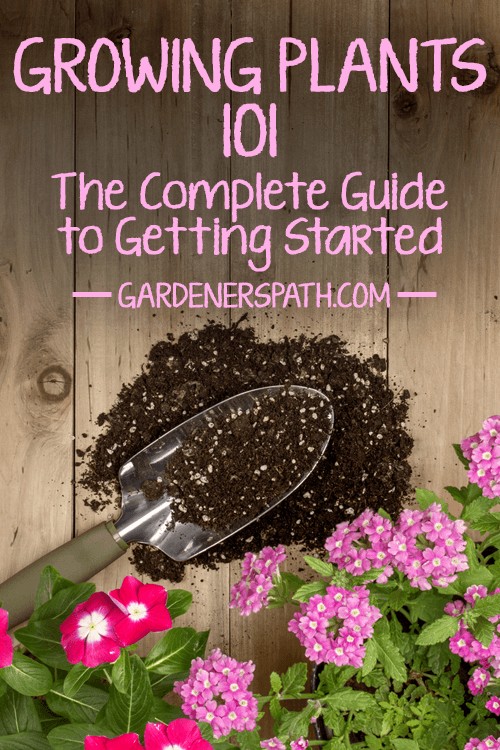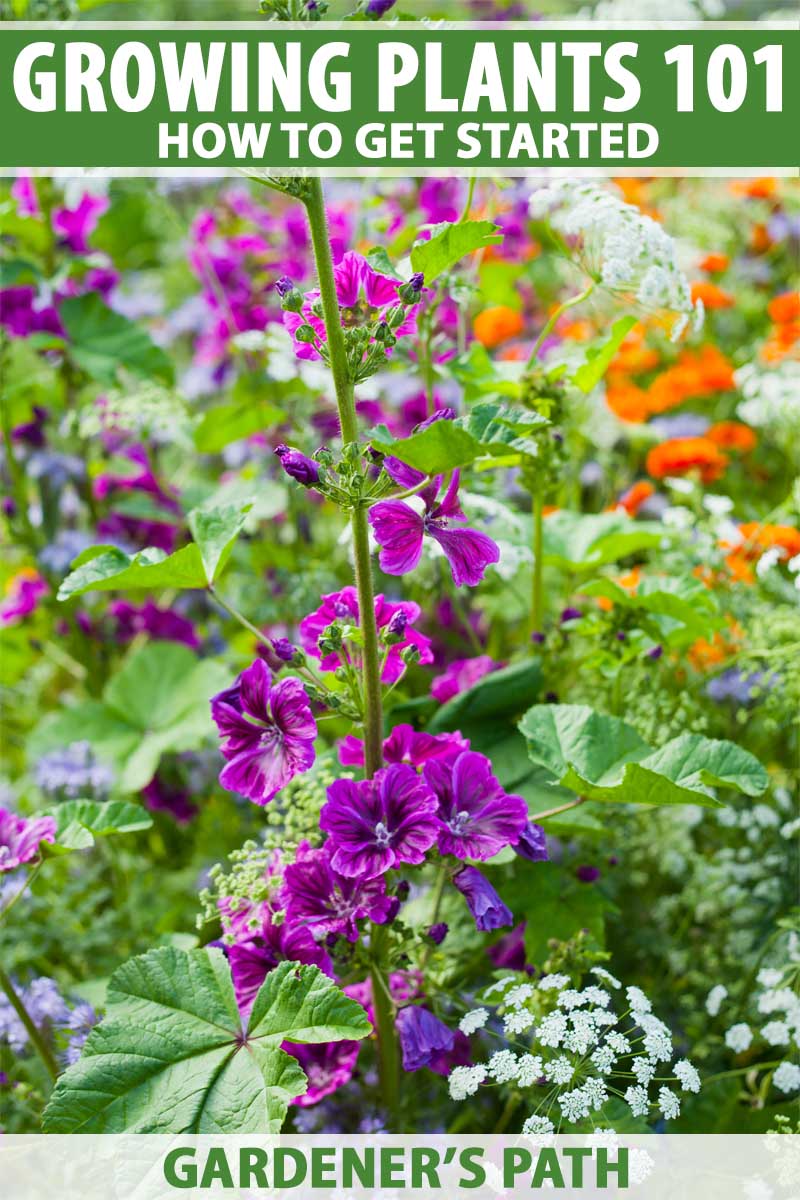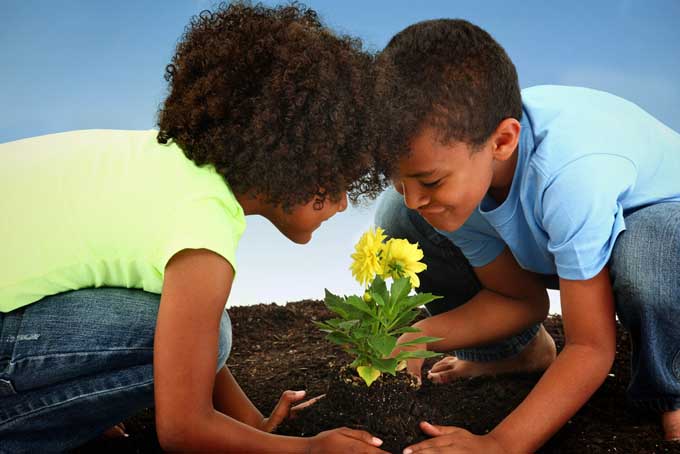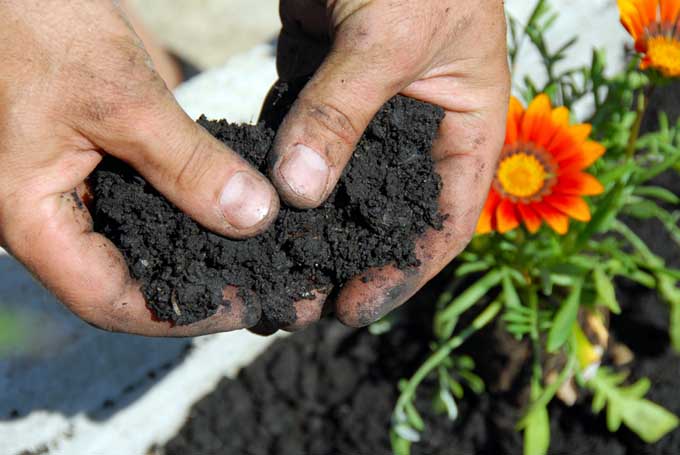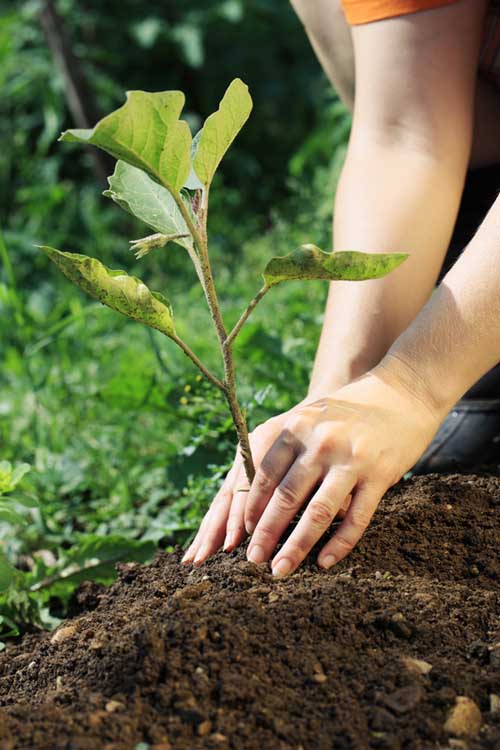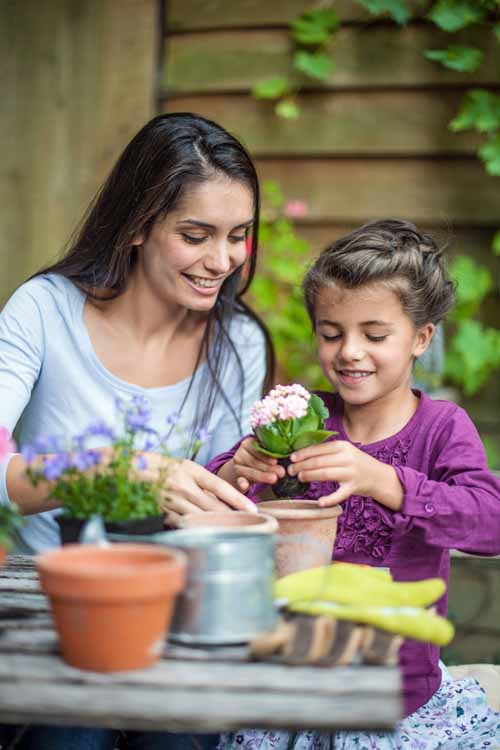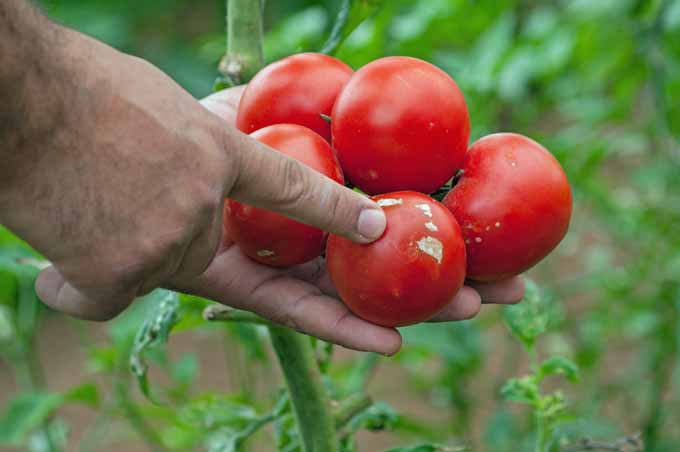This guide will get you started with giving your plants the best start, to allow them to blossom to their full potential. We link to vendors to help you find relevant products. If you buy from one of our links, we may earn a commission. This is true of the plants you see as you walk down the street, ones you buy at the garden store, and those you grow from seeds. I told you this would be easy! Why is this important? Well, if you can imagine yourself as your plant for a moment, this can actually help to improve your chances of keeping it alive.
Let’s say you went to the store and bought a variety that you think will look nice in your house. It’s a cute green thing with a flower of some sort. What should you do? From the time you decide to purchase it, begin to really think of it as another living thing. To make this a little easier, try to think of it as a new friend, or a pet. One thing you could try would be to say hello to it, and welcome it into your home. Plants appreciate attention just like any other living thing. The second thing you could do is to try to think like a plant. Imagine for a moment that you are the little green thing with the flower. What would you like? We’ll get into the very advanced scientific terms dirt, water, and sun later on. For now, we are concerned with even more basic things, like companionship. The little plant might be a bit lonely, or scared, after the rather traumatic ride home. If you have other plants, try placing the new guy near the older ones for some company. You are allowed to touch it and pet its leaves if you want. If this is your first plant, don’t despair! Talk to it and reassure it that things will be fine, and that he’ll enjoy the new home once he settles in. Maybe he’d like a drink? It has been a long day. A bit of water might relax him. Most store bought plants have little tags that tell you the common and Latin names, and usually a few tips for growing them. Take a moment and read the tag. Does it like bright sun all day long? Move it into the sunniest spot you can find. Does it like shade? Find a shady spot for it. This is pretty basic stuff, but many people are under the mistaken impression that any and all vegetation will grow anywhere. Not true. Think about the people you know. Some prefer a cool walk in the woods, others love going to a hot beach. Plants have their preferences too, and it is up to you to find out about your new friend and make things right. A final note: science has shown that the DNA of humans isn’t all that different from that of plants, and we share a lot of that core information. Deep inside us, at our evolutionary core, we share some basic building blocks with plants. Take a good look at yourself, imagine you are the plant, and ask yourself what you need. The answers become obvious.
Lesson 2: Water!
I hope you’ve spent some time thinking like a plant. Our next exercise requires you to “become” one. On a hot day, go outside around 9 a.m. and find a plant you admire. It can be a flower, a bush, a vegetable… whatever is handy. Stand or sit by the vegetation. Stay there as long as you possibly can. Try to stay by its side for four hours. What’s one of the first things that creeps into your mind after, oh, 15 minutes or so? Right! “I’m thirsty.” This lesson is about water. All vegetation needs it. Some need just a very little bit every so often. Some need a drink once a week. Some want water every day. Some even live in ponds, taking in water continuously.
If you get one thing from this lesson, remember that plants need water. Inside your house (or outdoors in containers), they are unable to get it themselves. You must do it for them. Sometimes you even need to water those that live outdoors in the ground. Really! If you get two things from this lesson, remember that all vegetation needs, water and that each variety has a different taste. Get that tag out that was attached to the pot when you purchased it. What does it say about water? Lots of it? Just a bit? How much have you been giving your plant? That tag wasn’t written for fun – pay attention and try to follow what it says, and your plant will be happy. OK, so now you know that you must water on a regular basis. But you are afraid you will give it too much or too little and kill it, right? Relax. I’ve got you covered. To water properly, all you have to do is pay attention to your plant, and it will tell you what it needs. Look at it. Really look at it. Does it look healthy and happy? Things are probably fine. Does it look like it is drooping, or becoming parched? Does it look thirsty? Water it. You can feel the soil, or even lift the pot and see if it feels heavy (wet) or light and airy (dry). Does the plant look bloated? Have you been watering a lot, but the leaves get more and more pale? Maybe it is getting too much water. Think like a plant! Pay attention to what you do, and how it responds.
I like to create a routine, once I know what my plants like. I have one in a window that likes shady conditions and very moist soil, so I water it every day or two, and spray its leaves with a mister when I think of it. I have another variety that wants almost no water. When I gave it too much, it turned pale and yellow. I cut back to watering it just a little bit once a week, and it is much happier. Finally, here is my last-chance watering method. If you are totally clueless and completely freaked out by the idea of watering (why did you buy this plant, anyway?) try this: just let the rain do the job if you have specimens native to the area – they should be adapted to the precipitation cycle. It won’t always work, but it might keep a few things alive long enough for you to figure out what you need to really be doing.
Lesson 3: Dirt!
You may still be thinking that things will go terribly wrong. That is understandable. On the positive side, you are thinking like a plant, and making sure your plants get the right amount of water. That’s a great start.
Another thing you will need to know about most varieties is that they live in the dirt. Scientists and gardening experts call this “soil,” but we will continue to call it dirt. Dirt is simply rotted once-living things. You can do an experiment to prove this. Make a small pile of dried leaves in the fall. Leave them there all winter, and then when spring rolls around, look at the pile. At the bottom, you will most likely find dirt. Not just any old dirt, but really good dirt. Fresh, dark dirt. There might even be some worms crawling around. You can actually make a pile of leaves and other stuff to make your own really good dirt. It is called a compost heap. Plants use dirt for a few things. Dirt holds them in place, and gives them space for their roots to grow. The roots expand in the dirt to help suck up all the water that the dirt offers. Dirt keeps trees from blowing over. Dirt is also full of plant food – nutrients that are used to help them grow. Just as plants like different amounts of sun and water, the type of dirt they like is also a personal preference. Some like very dark, moist dirt. Others like their dirt to be more sandy. What is a black-thumbed gardener to do?For most varieties, go with the best dirt you can find. The stuff from your compost heap should be perfect. It should be dark, moist, free of debris, and soft to the touch. Avoid clay-like soil, which tends to be very hard and thick, like, uh… clay. For most varieties, go with the best dirt you can find. The stuff from your compost heap should be perfect. It should be dark, moist, free of debris, and soft to the touch. Avoid clay-like soil, which tends to be very hard and thick, like, uh… clay. Avoid very sandy soil too, since the water will run off, and you’ve worked so hard to water correctly. Not to confuse you, but there are some species that like sand in the soil to improve drainage. But we’ll save that for the experts. If you have a strange-looking succulent like aloe or maybe a cactus, you might want to do a bit of research. You can buy special soil for these types of plants at most garden stores. Chances are, your plant came with some dirt. If you’re keeping your plants in pots, this dirt should be fine for quite a while. After a few years, however, the plant may begin to look tired, or may appear to be struggling to get out of its container. The best thing to do at this point is to transplant (read: move) it to a new pot with new soil. This gives it fresh nutrients, and more room to grow. Plants like to grow, so this pleases them.
One thing to avoid is burying any vegetation in mulch. Mulch is not dirt. This is a common mistake – you see your neighbor mulching the flower beds, and it looks like a good thing to do. Maybe you think it looks or smells nice, or that it will keep the weeds out. So you buy a big bag of mulch and drop it on your baby rose bushes As one who is prone to killing innocent vegetation, you should avoid mulch at the beginning (but definitely learn about this useful stuff when you take off your training wheels). Stick with dirt until you begin to have major successes. Your plants will thank you!
Lesson 4: Light!
Your growing skills are probably improving, but I want to make sure you understand the basics. You are here to learn how to get along peacefully with vegetation. No murder, no mayhem, but certainly some success every once in while, right? We’ve covered water and dirt. If you experimented at all, you may have also learned about mud. The third thing they all need is something we people also need (maybe it’s our plant DNA acting up again): sunlight.
I promised you no scientific mumbo jumbo so you’ll have to just believe me when I tell you that all vegetation loves sunlight. All plants do not love the same amount of sunlight, but most all like it at least a little bit. Think of your relatives. I bet at least one could sit in the sun all day, while others like to hide under umbrellas and hats. Plants are very much the same. So how do you know how much light a particular variety wants? This can be a bit tricky, since some that look like they might be great out in the hot sun actually prefer shade, and vice versa. And we don’t want to be baking our friends, do we? How do you know how much light a particular variety wants? This can be a bit tricky, since some that look like they might be great out in the hot sun actually prefer shade, and vice versa. And we don’t want to be baking our friends, do we? The first thing to do is to get that little tag out again, the one that was attached to the pot when you brought it home from the nursery. What does it say? Bright light? Shade? Partial shade? Follow the suggestions that are offered, and don’t try to second guess them. If you put something that likes shade in direct sun, it will roast. No tag? Well, what did we do with water? Right – we looked at the plant and experimented. We watched it carefully to see if we were over or under-watering. We can do the same with sunlight. Try putting the plant in a place that is part sun and part shade. How does it do? During the sunny times of day, does it looked thrilled? Or does it perk up when the shady times occur? Pay attention, and then adjust the location until it seems the most happy.
If you are having continued trouble, maybe you are trying to grow the wrong variety for your micro-environment. In this case, take a look at what else is growing successfully in your area, and try to get some of it going yourself, whatever this turns out to be. (Yes, you have permission to ask people what kind of vegetation that they have in their yards). I’ve found that most indoor examples like as much natural light as they can possibly get, so by all means, put them near windows. Watch out for heaters, though, and hot windowsills. These can dry them out much more quickly than usual, so you may need to water more.
If you have no windows and no outdoor area, you may have great difficulty growing anything except fungus. You can, however, get some artificial lights. But this is probably too much work, so I’d concentrate on finding a place that has windows first. In summary, all varieties like some level of light. Some like it a lot, some like it a little, and it is up to you to find out how much your plant wants if you want to succeed in gardening.
Lesson 5: Experiment!
I’m proud of you, thinking like a plant and knowing that they like water, dirt, and sunlight. So, are you still killing them, or are they starting to do better? The next skill to master is that of improvisation. Yes, this means relaxing and going with the flow. Your curiosity has to have room to explore the plant world.
One of the easiest experiments to attempt is the Stick Test. Simply take a cutting of a plant that’s about the size of a small twig, and stick it into some dirt. Give it water as you would any other vegetation, and give it sunlight. There is about a 40 percent chance that it will take root and grow (and if not, what have you lost?). Next, there is the Seed Challenge. Take a seed of just about anything, and try to get it to grow by sticking it in dirt, watering it, and keeping it warm. You can get a small forest of mini trees going rather quickly if you are patient. Look for seeds outside your house, or in your kitchen. Try an apple seed, or an orange seed, or a maple, or an oak. Some plants love to be cut from time to time. You can do a Trim Test, and see if it likes to be cut back. Start by cutting or pinching the end of a single stem or branch. Wait, and watch what happens. Does it die? Then stop doing it. Does it heal, split into more branches, and start to grow back? If so, you might be able to encourage your plant to grow even bigger by cutting it back, as strange as this might seem. Plants can be hardy that way. A Climbing Race is always fun. Some varieties, like peas, like to climb. You can have races, and see which grows the tallest in the shortest amount of time. Is it getting access to better conditions? Why is it the tallest? If you are really bold, you can try tasting some of your plants. Not all of them, but some are good to nibble on. You might want to do some research so you don’t eat anything poisonous, but with minimal effort, you can have a whole bunch of edible varieties growing. You’ll find they taste much better than anything from the store. Does your plant look crowded in its little container? Has it been there a long time? Transplant it into something bigger and see if it improves. You’re starting to get the picture. With some basic knowledge of dirt, water, and sun, you can begin to see what happens if you add a bit more here, a little less there, and a few seeds or cuttings. Sure, some of this experimenting will result in more mistakes. But you’ll get a few oddball successes, too. You will learn from both, I promise.
Lesson 6: Rescues!
Some of my favorite plants have been rescues. I’ve found them in the garbage as tenants move out of their apartments, or I’ve inherited them when friends move away. These are the true friend of the “black thumbed,” as they cost nothing. That’s right, they are free, and they’re as good as dead when you get them. This means you get to attempt to save a dying plant rather than starving a store bought guest to death, as is more often the case.
A plant in need is a plant indeed. If it weren’t for you, it would wither and die. But you’ve come along. And you know of a spot that it could inhabit at your home, and you plan on giving it sun, water, and maybe some new dirt. Yes, you should always be on the lookout for the castaway plant. When you find one, adopt it as your own, and do your best to rejuvenate it. If it survives and begins to thrive, you’ve got a friend for life. Absolutely anything you could do would be better for this plant than if you left it to die. You can’t lose! The worst thing that could happen would be that it gives up and passes on… but you wouldn’t be implicated in this one. You just lost the patient, doc. You did everything you could. Yes, you should always be on the lookout for the castaway plant. When you find one, adopt it as your own, and do your best to rejuvenate it. If survives and begins to thrive, you’ve got a friend for life. Go ahead and reach out. Accept plants into your life when they come along, whether you find them in the street, or are given them by a friend. This is a win-win situation for you, and it.
Lesson 7: Learning Even More!
If you’ve stuck with it this long, you are certainly ready to learn more. This doesn’t mean taking classes, or learning botanical names, but simply doing a bit of research on your own to answer the questions you inevitably have lingering.
How do I transplant something? What’s fertilizer? What is wrong with this fern? Our experiences in nature often lead to questions. The first place to go for additional information is other gardeners. Yes, other people sometimes have good advice to offer. Start with friends and family who have grown things. The first place to go for additional information is other gardeners. Yes, other people sometimes have good advice to offer. Start with friends and family who have grown things. Maybe your sister has grown tomatoes, or your father has a way with roses. Maybe your coworker has a spider plant. If so, these people can help you. Walk around your neighborhood and strike up conversations with other gardeners. Say something like, “Wow, your garden is gorgeous!” That will usually get them talking. Ah, but you are ashamed of your skills and find it hard to ask, right? Try the old “I have a friend who is interested in gardening…” trick. It works for dating questions, and it is bound to work for gardening questions too. Still too shy? Maybe you should stick with the internet. There are many great gardening resources (and many not-so-great ones). You’ve already found Gardener’s Path, so why not take a look at the comments section below. You can write questions, and helpful elves will come in the night and, with luck, answer your questions.
You can also use a search engine and type in some keywords that will help you to locate the information that you seek. Try specific terms (like “daisy”) rather than broad terms (like “flowers”) if you want to find the most helpful answers to your questions. I like to get a couple of opinions about each item while surfing the web, too, just to make sure other folks are in agreement. In addition to those great options, your town probably has a library. And guess what – libraries let you take books home for a little while, for free! Take advantage of this by going to your library and asking the person at the desk where you can find information about gardening. Most librarians take pride in knowing their collections, and will provide you with information about what you are looking for quickly, at no charge. Ask to take the materials home (you will need a library card, which is usually easy enough to procure), and study away. If you aren’t careful, you may end up buying a Japanese maple when all you really wanted was some advice on watering your pot of basil. Buy the Kindle version and use the PC or Apple app to access it, or you could even opt to keep an actual Kindle around. I’ve found that I’ve been able to free up a ton of space around my house by keeping most of my reference library in an electronic format. Garden centers are a last resort. Not because they aren’t useful (many have professional staff people that really know and love plants), but because they have the potential to overwhelm beginners. The great thing about learning more about plants is that your knowledge grows (pardon the pun). If you learn how to cultivate one good bean plant, you’ll probably have success with most of your beans. Leave your money at home, and casually walk around the garden center with a small notebook. Look at the base of the plants. They all have tags, remember? Look at those tags, and when you find the plant you have a question about, study the tag. Take notes. You may get a clue to your mystery. You can also ask the staff questions, too. If they suggest buying something, beware of the irresistible sales pitch! Tell them you are on your way to a long meeting, and will stop back later to pick up whatever it is they suggest. You can decide at home if you really need the $300 garden statue, or the $5 bag of topsoil. Your goal for this trip is gathering information. So relax, ask questions, look for books or magazines, and search the web.
Lesson 8: Bugs and Diseases!
Remember being a kid? You’d see a cool bug, watch it walk around for a while, and maybe catch it and put it in a jar. Or, perhaps you were the type to say, “Ick!” and squish it. As you begin to grow things in your yard and garden, you will inevitably attract insects. Insects love vegetation. And all vegetation, for the most part, loves insects, too.
Insects use vegetation as apartment buildings, factories, and restaurants. They build homes. The nibble. They gather pollen. You’ll find all sorts of bees, big and small, hovering around certain flowers. You’ll find spiders making webs between leaves in your garden. You might see a caterpillar find a place to settle in and become a butterfly. Plants benefit from insects. They need insects to help them reproduce and bear fruit. You’ll never see a flower swat a bee for coming too close. My general advice for the insects in your garden is to let them be. Enjoy them. Make friends with them. Look at them up close and marvel at their colors and shapes. Sure, you may come across an occasional insect that acts like a real pest, but even so, why not sit back and watch them do what they do? You can learn a lot from simply paying attention. I’ve let caterpillars, for example, devour a licorice plant. The plant looked pretty bad while they were feasting, but once they curled up in their cocoons, the leaves all came back.
Of course, the whitefly is one insect that gets out of control. You’ll find little white bugs under leaves that fly up and scatter when you get close to them. There are millions of ways to deal with them, but we are black thumb gardeners. Admit defeat immediately, and put the infested plant away from the others (you can try to get rid of them later, with additional study, after you graduate…). Or, if you really want to try to control the problem, buy a natural bug killer containing pyrethrins (a plant extract) and spray the infested plant like there’s no tomorrow. Do this once every few days for a couple weeks, and you should be able keep the white flies down to a dull roar. Diseases are another matter. Like humans and animals, plants get sick for a variety of reasons. Maybe they haven’t been getting enough nutrients. Perhaps it has been an especially wet season, or other adverse conditions weakened the plants’ resistance. You might be doing everything right (sun, dirt, water… remember?), but the leaves turn yellow and fall off. What to do? Black-thumbers don’t have the energy to deal with diseases effectively, and we really don’t want to go through that much trouble just for a plant, right? But we still feel bad that our little green friend is ailing. There are a few things you can try: First, move it away from other vegetation. This will prevent the disease from spreading to your other plants, and perhaps the change will do it good. Second, watch the leaves, stems, and stalks, and take note of the symptoms. We’ve already discussed talking to other gardeners and searching the web for answers – if you get a good list of symptoms together, you might be able to do some research and find a simple solution. Is the disease causing the leaves to change color? Does the plant look deformed? Are there any bumps or strange looking growths? These are the clues that will help you to identify the disease. You may not be able to save this plant, but you can use what you learn to prevent the problem in the future. Finally, don’t bother with miracle cures, and try to avoid buying seedlings that have been grown in factory-like greenhouses. Almost all of the diseased plants I have come across have been store bought. I don’t think it is the store’s fault, but something about growing them unnaturally, packaging, and shipping them long distances causes the plants great stress, and seems to increase the chance of disease. Insects and diseases are parts of growing a garden, and it is in your interest to expect them, welcome them as opportunities to learn, and learn to minimize the damage to other, more healthy plants.
Lesson 9: It Really Wasn’t Your Fault!
I know what you’re thinking. You’ve tried everything. You followed the instructions. You watered. The plant got the proper light and temperatures. The soil was fine. You talked to the little thing and coaxed it along. You’ve been good. And it still withered away. In this case, it really wasn’t your fault.
Yes, I know I scolded you in earlier columns and told you it was your fault, but that was before you started to pay attention to what you were doing, and before you started thinking like a plant. In some cases, there is just nothing you can do. Have you ever tried to be friends with someone and, despite your best efforts and intentions, it just didn’t work out? Have you ever had a disaster in the kitchen, and created a meal that had to go right into the trash? How about a stain on your best shirt that just won’t come out? These are all examples of Murphy’s Law: Whatever can go wrong will go wrong. It happens with vegetation, too. If you really have tried everything and the plant refuses to respond, try putting it up for adoption. Give it to a friend, or put it out by the street with a signs that says “free to good home.” Your goal is to minimize your efforts, so you should go find a replacement that isn’t, uh, broken. Don’t feel bad. It happens to many people. Blame the plant, not yourself, and move on. In other words, just don’t give up. Find another variety that you think will grow under the conditions you have, and try, try again. It really wasn’t your fault.
Lesson 10: Plants Are Good For You!
You’ve come a long way since the first lesson. It’s time to contemplate the meanings of our actions. Why are we spending all this time with a silly old plant, anyway? What do we need them for? Well, green things are good for you. Let’s look at few of the ways they help.
They give off oxygen. Yup. Your car spits out exhaust, but a plant will supply you with oxygen as it eats up carbon dioxide. Which bring us to number two…
Plants get rid of carbon dioxide from the air. They eat it up, and turn it into energy for themselves, and oxygen for the rest of us.
Some varieties can be eaten. They provide us with fruits, berries, vegetables, and herbs. When you grow these yourself, and avoid pesticides and chemicals, you can get some really fabulous edibles.
Some examples are medicinal. You can actually use them as you would medicine from a store. Many medicines are simply chemically-recreated versions of things found in nature.
Some varieties give us shade. Trees come to mind. In addition to helping to protect us from the elements, trees and bushes provide homes for insects, birds, and small animals. Not only do you get a plant, you might also get an animal…
Plants help you to relax. I’m not talking about the joys of gardening, here. I’m talking about sitting back and looking at all the various trees, bushes, shrubs, flowers, and vegetables you are helping to grow, admiring their simple complexity, and noticing the slow changes they go through.
You can let your mind wander for a little while. 7. You get some exercise. OK, not a lot of exercise maybe, but you are carrying that water around, right? That bag of dirt was kind of heavy, wasn’t it? Take some time to appreciate all that vegetation does for you. You might even want to thank it.
Lesson 11: Four-Year Basil and Other Oddities!
Basil, as most experienced gardeners will tell you, is a species that lasts for a season. After that, it is no good. All I can say is that I’m glad I didn’t know this bit of basil trivia when I brought a clay pot with an aging basil plant inside on year, to sit in my front window. I plopped it on the windowsill and watered it as I would anything else (when it seems to look dry, I give it a drink). Every few weeks, I’d pick off the tops and use them in a sauce or salad that I was making in the kitchen. In the winter, it wouldn’t grow as fast, but it would pick back up in the spring. I kept this going for almost four years.
The tender stalk turned into a tough, tree-like trunk, but it kept going. And I enjoyed fresh basil for quite a while. Then the gardeners found it. Friends who knew better asked me about it. “How long have you had this?” they would say. “Four years,” I responded. “Impossible!” they said. “Basil only lasts one season.” They questioned me. “Didn’t the tops flower?” Well, no. I kept cutting off the tops. “Didn’t it turn black in the winter?” Uh, not really. It enjoyed being inside. The strange thing is that, once they told me that it couldn’t be done, the plant let out a last gasp and faded away. Ignorance can be bliss, and it can sometimes provide you with fresh basil for years from the same stalk. Since then, I’ve conducted many experiments. Can tropical varieties do well in the northern zones? Ask my giant pineapple plant. I expect it to flower this year. Or talk to the the orange tree I started by putting the seeds from my breakfast into a spare pot. Can you start a ficus tree just by cutting off a branch off an existing tree and sticking it in the dirt? Yup, and if you plant two you can, over time, train them to twist and spiral around each other. My suggestion to you, fellow Black Thumbers, is to challenge the status quo from time to time. Get your curiosity fired up, and see what happens when you attempt the impossible, implausible, or downright weird. Put seeds from your fruits and vegetables in some soil, and see what comes up. Take an onion, or a potato, and sow it to see what happens. Keep a pot or two around just for this purpose. If you are lucky, you’ll have the pleasure of seeing your experiment grow and prosper. If you fail, well, it was only an experiment, and it wasn’t supposed to work anyway. (P.S. Don’t tell any serious gardeners what you are doing. Experience has shown that this can curse your attempts.) Happy gardening! Stick with your studies, and let me know what you’ve learned! © Ask the Experts, LLC. ALL RIGHTS RESERVED. See our TOS for more details. Uncredited photos: Shutterstock.
